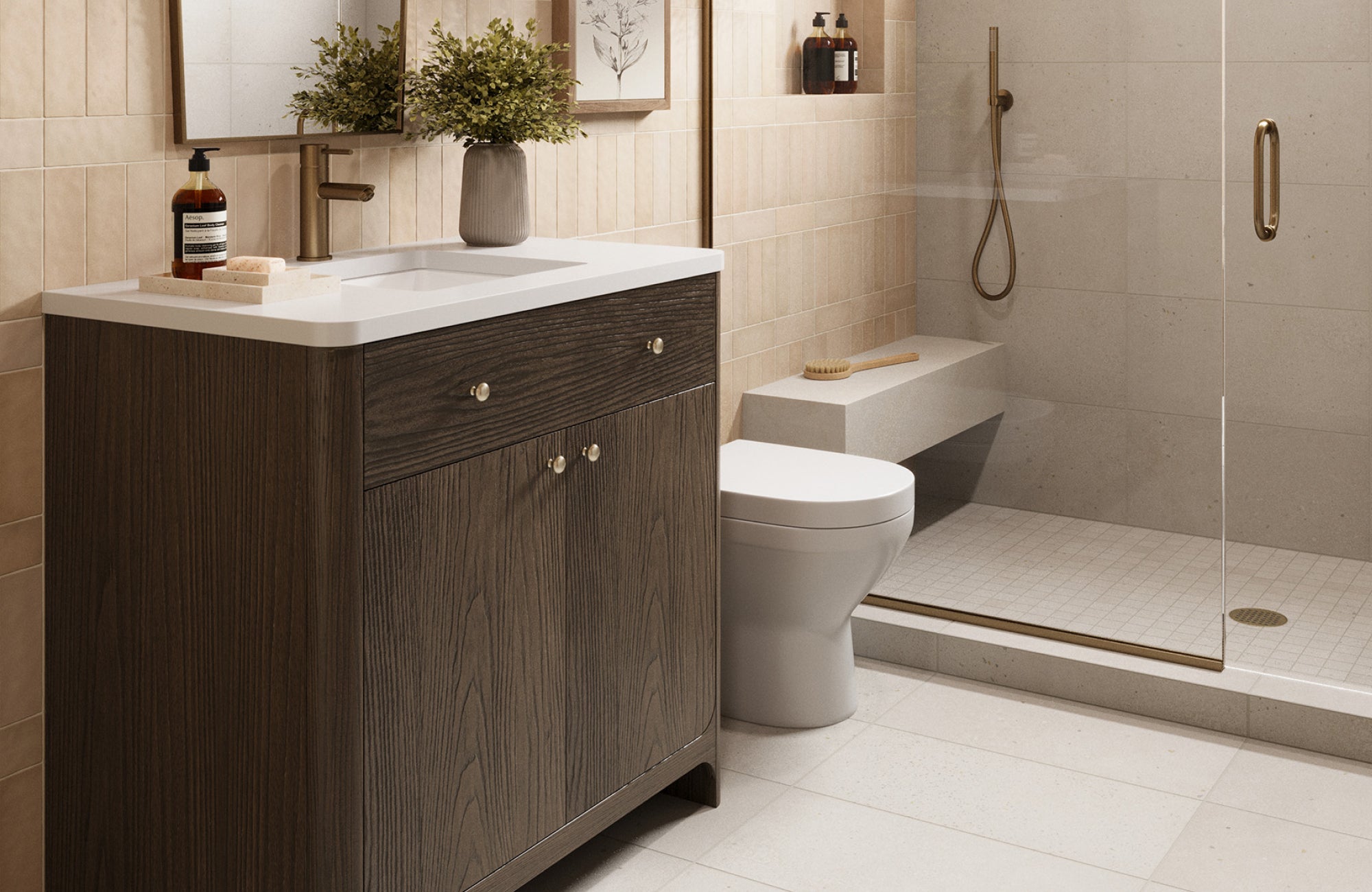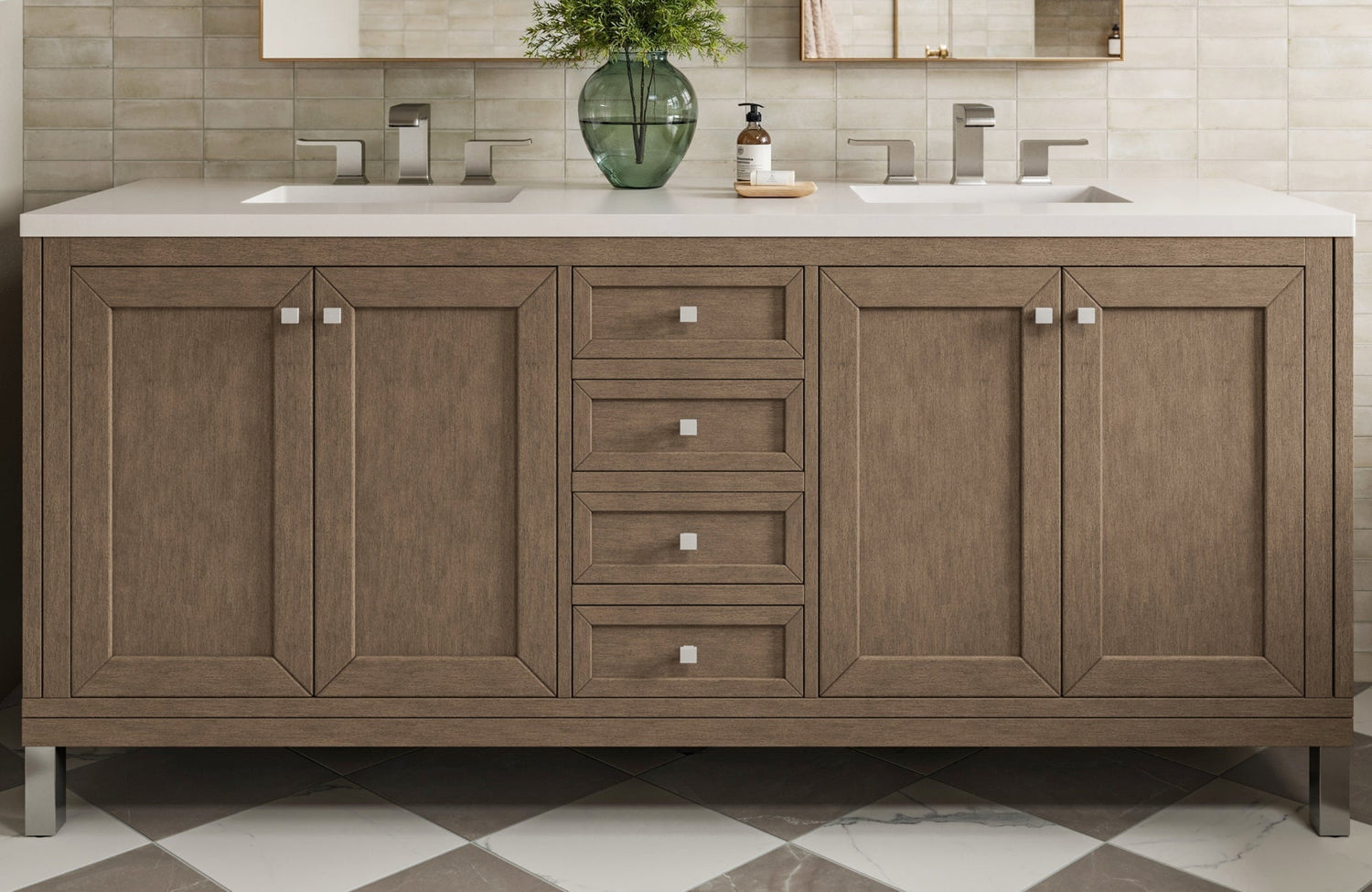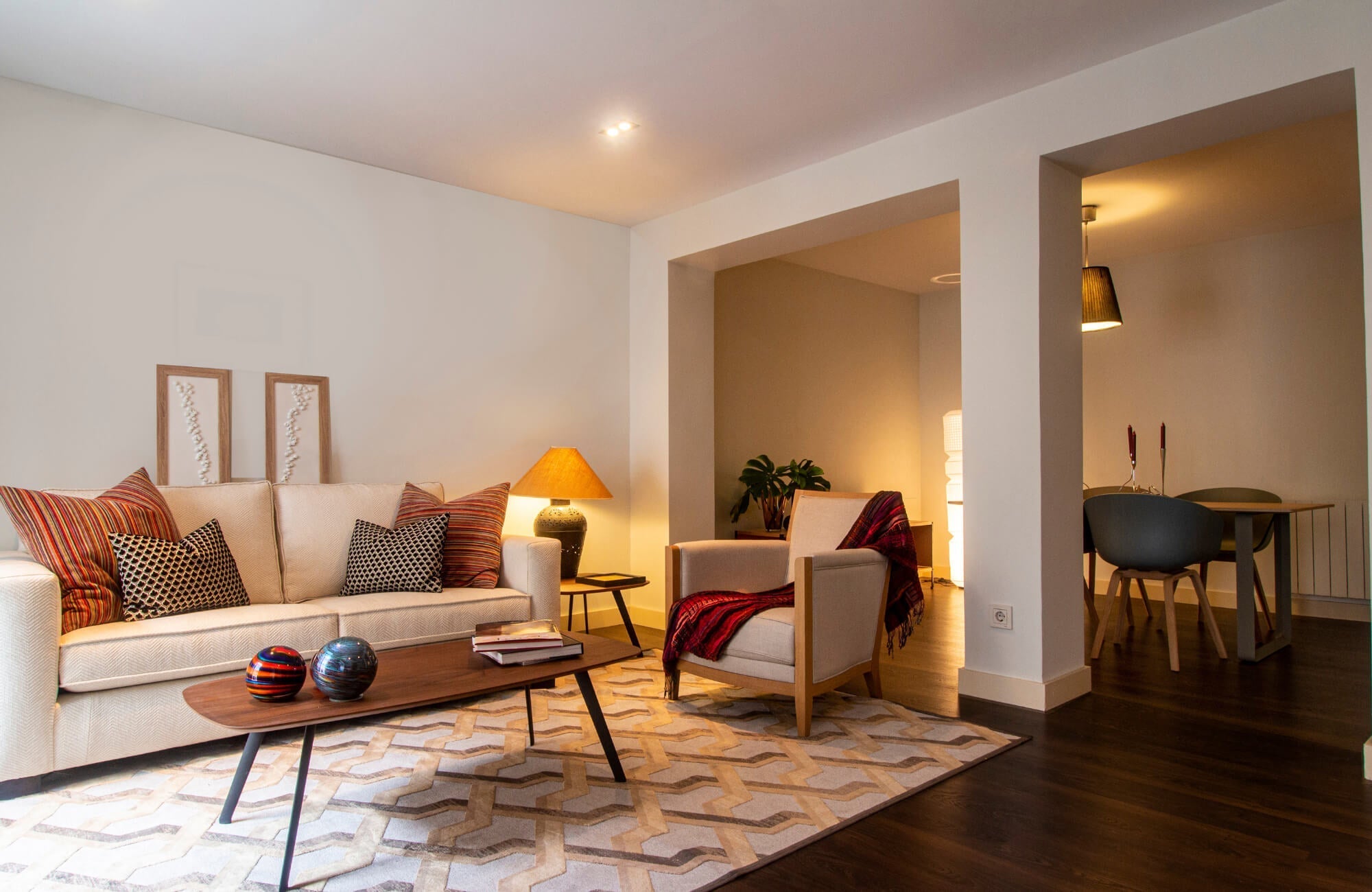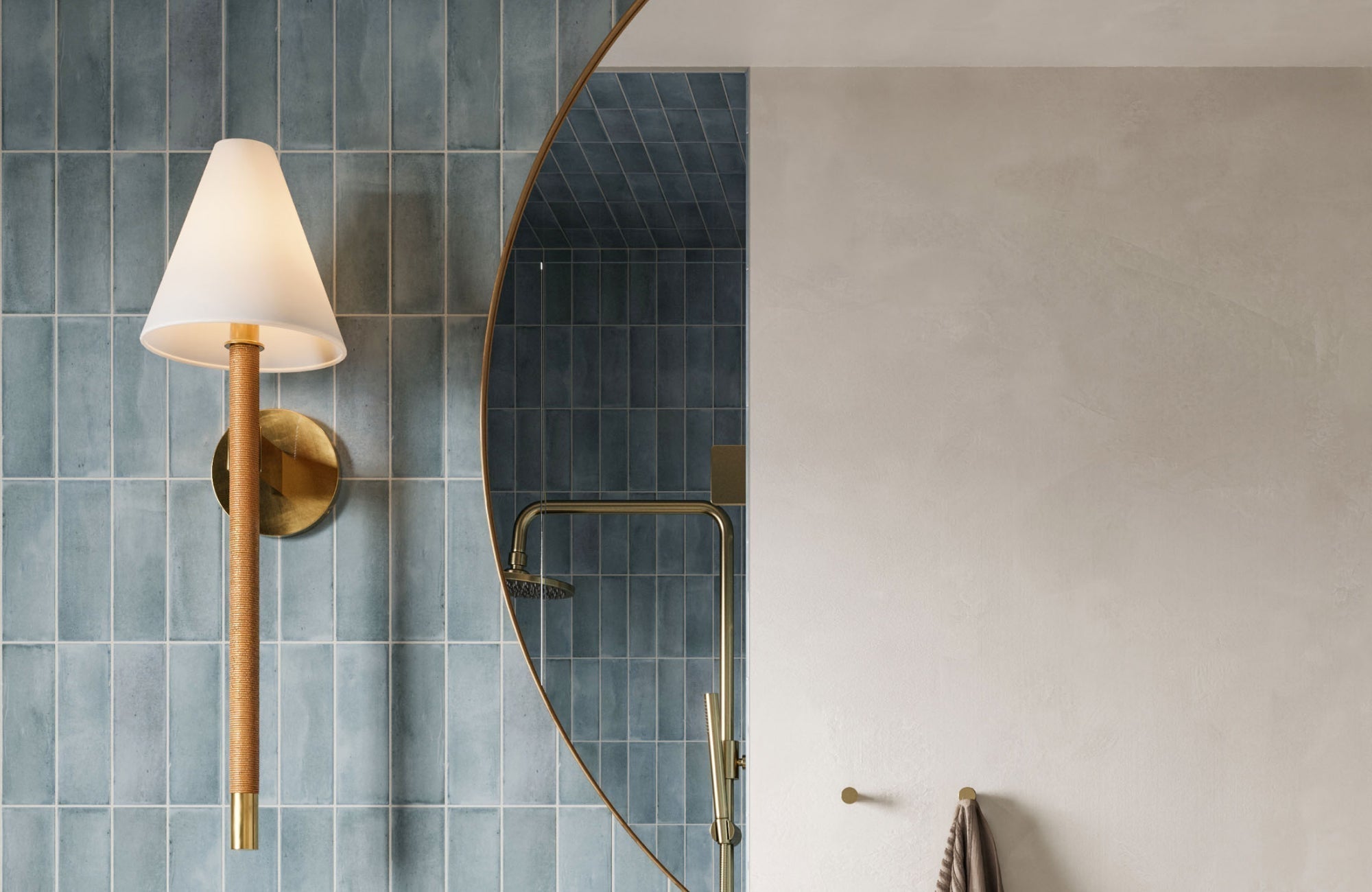When you’re refreshing your bathroom, the vanity becomes more than just a sink cabinet; it also sets the tone for your entire space and plays a key role in your budget. You might be debating whether to buy something ready-made vanity or build one yourself to save money and create a custom look. This article will guide you through both paths, from upfront costs and long-term value to how each option suits your space and skills, to help you make the smartest choice for your home.

Breaking Down the Cost of Buying Versus Building
Cost is usually the first thing on your mind when choosing between buying or building a vanity. We’ll break down each cost, including materials, tools, and labor. That way, you’ll know exactly where your money’s going before you make a move.
Price Range of Store-Bought Vanities
When it comes to store-bought vanities, the price largely depends on size, materials, and built-in features. A quality single-sink vanity typically starts around $1,219.00, while double sink options like Edward Martin’s Maxine 72" Double Vanity in Washed Natural Veneer with Carrara Marble Top, as shown in the picture above, start at $3,399.00. There are also budget-friendly choices from $150 and mid-range selections between $500 and $800, which offer good value for the price. As the cost increases, so do the benefits, like soft-close drawers, durable finishes, and easier installation. So while the upfront price may be higher, store-bought vanities often deliver reliable quality and convenience, making them a solid investment for many bathrooms.
Materials and Tools for a DIY Build
When building your vanity, the overall cost comes down to two key factors: the materials you choose and the tools you already have in your garage or workshop. If you opt for materials like MDF or birch plywood for the frame, you can expect to spend around $80 to $120 just on the base. Once you factor in extras like drawer slides, hinges, knobs, and your choice of paint or stain, your materials total will likely land between $200 and $350.
Now, if you already own the essential tools, say a circular saw, clamps, and a sander, you’re in great shape. But if you’re starting from scratch, you could be looking at an additional $100 to $300 for tool purchases or rentals. The good news is, those tools won’t go to waste; they’ll come in handy for other DIY projects down the line. So while building can save you money, your actual cost will depend on how much of a head start you already have.
Installation and Labor Considerations
Buying a vanity can save time, but it often includes delivery and installation costs, especially with wall-mounted units or double sinks. Labor fees vary based on complexity, usually ranging from $100 to $400. With a DIY build, the savings often come with a time commitment, which could stretch across multiple weekends depending on your pace and skill level. You may still need professional help for plumbing hookups, so it’s worth factoring in those costs from the start.

How Skill, Time, and Risk Impact the True Cost
Affordability goes beyond the initial price as it also depends on the time, tools, and experience you’re bringing to the project. Though building your vanity can be a cost-saving option, the true expense hinges on your comfort level with DIY tasks and how efficiently things come together. Here's how skill, effort, and unexpected challenges can shape the final cost.
Required Carpentry and Finishing Skills
Building a vanity takes more than basic assembly; it involves accurate cuts, proper joinery, and a polished finish. If you’re unfamiliar with woodworking tasks like fitting drawers or aligning cabinet doors, there’s a learning curve. Although these skills can be developed, early mistakes can lead to wasted materials and added frustration. Taking time to plan and practice will help, but may also extend your timeline and increase overall cost.
Dealing With Plumbing and Wall Integration
Custom builds give you flexibility, but they also come with more responsibility when it comes to plumbing alignment. Careful planning, dry fitting, and precise measurements are crucial to avoid misalignment that could result in costly adjustments or hiring a plumber. Store-bought vanities, on the other hand, often come pre-drilled for single-hole faucets and include standard cutouts, which greatly simplify the installation. Edward Martin’s Colton 36" Single Vanity in Sable with a 3 cm White Zeus Quartz Top, as shown in the photo above, for example, is designed for standard hookups, helping streamline the entire setup process.
Time Commitment and Potential Setbacks
Time is one of the most commonly underestimated factors in a DIY vanity project. Even straightforward builds can stretch into several weekends due to delays like drying times, supply runs, or fixing small mistakes. As mentioned earlier, while you might save on installation costs by building yourself, the tradeoff is often a slower timeline. If you have limited availability or need a faster turnaround, buying a ready-to-install vanity may be the more practical choice.

How Durability and Maintenance Affect the Cost
The true cost of a vanity isn’t just in what you pay upfront; it’s also how well it holds up over time. A budget-friendly option can become costly if it needs frequent repairs or upkeep. To make a smart investment, it’s worth considering how durability and maintenance will impact your expenses in the long run.
Durability of Store-Bought Vanity
Store-bought vanities are often engineered for consistent performance, especially in busy bathrooms where moisture and daily wear are constant concerns. Many premium models, such as Edward Martin’s Holly 72" Double Vanity in Sunwashed Oak with 3 cm White Zeus Quartz Top as displayed in the photo above, feature a multi-stage coating inside and out that provides lasting protection against UV damage and humidity. This added layer of durability helps prevent warping, fading, and surface wear, ensuring the vanity maintains its appearance over time.
What also sets this Holly vanity apart is its brushed aluminum laminate drawer bottoms, which offer extra durability where it matters most. These thoughtful design details reduce the need for repairs, making it a reliable, long-term investment. With the right materials and protective finishes already in place, vanities like Holly allow you to enjoy both style and performance, without the maintenance headaches.
How DIY Builds Age
A well-built DIY vanity can hold up beautifully for years, especially when made with solid wood, marine-grade plywood, and durable finishes. With smart material choices and thoughtful planning, it can also be both functional and easier to update or repair down the line. However, its longevity depends on the care you take during the build. Skipping sealing, using low-quality hardware, or neglecting moisture protection can lead to early wear, structural problems, and ongoing maintenance that may cost more in the long run.
Maintenance
Maintenance often plays a bigger role in the overall cost of your vanity than you might expect. Surfaces like grout lines, exposed wood, and frequently touched areas all require regular care to stay in good shape, and when upkeep is overlooked, small issues can turn into costly repairs. Store-bought vanities generally make maintenance simpler, with features like sealed finishes, moisture-resistant coatings, and thoughtful design elements that are built to last.
A great example is Edward Martin’s Sasha 36" Single Vanity in Mid Century Walnut with a 3 cm White Zeus Quartz Top. Its integrated quartz-based sinktop not only enhances the vanity’s clean, modern aesthetic but also makes maintenance a breeze; it cleans easily and naturally resists stains and mildew. Choosing low-maintenance finishes and durable materials like this can save you time, effort, and money in the long run. And to keep everything performing at its best, it’s always a good idea to follow the manufacturer’s care instructions.
Practical Cost Examples for Vanity Builds and Buys
To better understand the financial trade-offs between buying and building a vanity, it's useful to look at simplified examples that reflect typical costs and conditions. These general scenarios illustrate how different approaches affect the overall budget.
DIY Vanity on a Tight Budget
A basic DIY build using birch plywood, ceramic tile, and standard hardware can typically be completed with a materials budget under $400. This estimate assumes the individual already owns essential tools such as a jigsaw, clamps, or a sander. Labor is not factored in as it’s considered self-performed. The timeline for a small project like this may extend across two weekends, depending on skill level and workspace availability.
Buying Mid-Range and Upgrading
A pre-assembled mid-range vanity may cost approximately $500. Additional upgrades, such as hardware replacements or adding a tile backsplash, can bring the total closer to $700. This approach reduces labor time and tool-related expenses and often requires less planning and setup. It also provides a balance between customization and convenience while staying within a modest budget.
Hidden Expenses That Come In
Unexpected costs are more common in DIY builds, but can affect any renovation project. These may include underestimating quantities of supplies like grout or adhesive, purchasing replacement parts due to mistakes, or needing additional hardware not originally budgeted. For example, if a countertop is not sealed properly and becomes damaged, replacing it can significantly increase total costs. Careful planning and conservative estimates can also help minimize these risks.
Deciding Which Option Fits Your Project Best
Now that we’ve explored both sides in depth, it’s time to decide what truly works best for you. Whether you’re looking for speed and simplicity or creative control and savings, the right choice comes down to your lifestyle, timeline, and comfort with DIY projects.
If you’re still on the fence, this quick guide can help you weigh the options:
Buying a Vanity Might Be the Better Fit If:
- You’re working with a tight timeline or need a quick install.
- You don’t own tools and prefer not to invest in them.
- Your plumbing setup is standard, and you want a straightforward installation.
- You want a factory-finished product with reliable warranties.
- You’d rather trade a slightly higher upfront cost for convenience and peace of mind.
Building Your Vanity Makes More Sense If:
- You’re confident with tools or eager to gain hands-on experience.
- You already own core tools like a circular saw, clamps, and a sander.
- Your bathroom space requires non-standard dimensions or a unique layout.
- You want full control over design elements like materials, finishes, or storage.
- You’re focused on long-term savings and prefer a personal, customized result.
Making the Smartest Choice for Your Budget
In the end, there’s no one-size-fits-all answer. The right choice is the one that balances your time, skill, and design goals with your budget. A ready-made vanity offers convenience, speed, and reliability, while a DIY build rewards flexibility, savings, and personalization; if you’re ready to take it on.
If you’d like expert help comparing your options, we’re here for you. Contact us today to speak with a product specialist or schedule a design consultation. We’ll help you find a vanity solution that suits your space, your needs, and your budget, beautifully!









